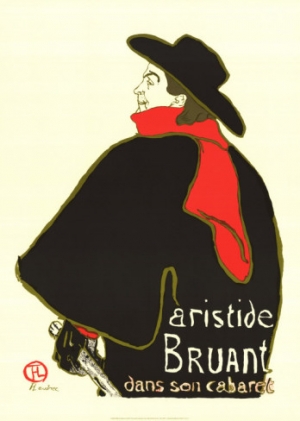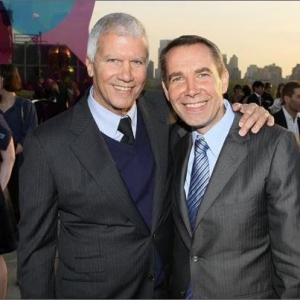|
Displaying items by tag: judge
A Florida judge has awarded $24.6m to three trustees of the Robert Rauschenberg Revocable Trust in a long-running legal dispute with the Rauschenberg Foundation that dates back to 2011.
The trustees sued the foundation for compensation for their “extraordinary services” in administering the trust. Under Florida law, trustees are entitled to “a reasonable fee” should the terms of the trust not specify their remuneration.
The trustees, Bennet Grutman, Darryl Pottorf and Bill Goldston, argued that they deserved a combined sum in the region of $51m to $55m. The foundation argued that this figure should be around $375,000 only.
The Corcoran Gallery of Art in Washington received a surprising setback in court this week when a judge ruled that members of a group opposing the institution's planned takeover deal with the National Gallery of Art and George Washington University have legal standing and will be able to have their grievances heard.
On Monday, Judge Robert Okun in D.C. Superior Court ruled that nine members of the group Save the Corcoran must be allowed as intervening parties to the Corcoran's plan. According to the group, the nine include current students, a faculty member and a member of the gallery staff.
The City of North Miami has asked a judge to dismiss the lawsuit filed earlier this month by the Museum of Contemporary Art.
The city is calling MOCA's suit to move some of its artwork and spread it out across South Florida "legally deficient."
"We're not going to let anybody take our art collection and move it somewhere else after so many years of establishing the great MOCA," Councilman Scott Galvin said.
A judge has ordered that a painting by Pierre-Auguste Renoir that was allegedly purchased at a flea market for $7 in 2009, be returned to the Baltimore Museum of Art. The museum filed papers in federal court last year arguing that the work legally belonged to the institution and had been stolen while on view there in 1951.
Martha Fuqua, who had purchased the painting at a Virginia flea market, claimed that she deserved to hold on to ‘On the Shore of the Seine’ (1879), a small landscape painting, because she was unaware that it had been stolen. The FBI seized the work in 2012 from an auction gallery. Fuqua had hoped to sell the unsigned work for as much as $100,000.
The Baltimore Museum of Art released a statement saying, “We look forward to celebrating the painting’s homecoming with a special installation in the galleries in late March.”

On July 2, 2013, a U.S. District judge decided the fate of 15 contemporary artworks once belonging to the disgraced financier and attorney, Marc S. Dreier. Dreier was convicted of fraud in 2009 for selling hundreds of millions of dollars in fake promissory notes to hedge funders and a section of his collection has remained in limbo ever since.
Judge Jed S. Rakoff ruled that the art holdings, worth $33 million, will be turned over to New York’s Heathfield Capital Limited, the company that suffered the greatest from Dreier’s scam. The works going to Heathfield Capital include a piece by the conceptual artist John Baldessari (b. 1931), an untitled work by Keith Haring (1958-1990), one work by Alex Katz (b. 1927), three by Roy Lichtenstein (1923-1997), an untitled work by Mark Rothko (1903-1970) and three pieces by Andy Warhol (1928-1987) including the iconic Jackie portrait of Jacqueline Kennedy Onassis. The bulk of Dreier’s collection was sold in 2010 at Phillips and the profits were reserved for creditors of Dreier’s law firm.
Drier is currently service a 20-year sentence at a federal prison in Minnesota.

The Baltimore Museum of Art (BMA) filed papers in federal court this week arguing that a painting by Pierre-Auguste Renoir (1841-1919), which was found in a Virginia flea market in 2012, legally belonged to the institution. On the Shore of the Seine (1879) a small landscape painting, had been stolen while it was on view as part of an exhibit at the museum in 1951. A Virginia woman later purchased the work from the flea market for $7, allegedly unaware of the work’s distinguished provenance.
The documents filed on Tuesday, June 4, 2013 in U.S. District Court in Alexandria, VA, claim that no one except the BMA can legally own the Renoir because it belonged to the institution before it was stolen. The buyer of On the Shore of the Seine, Martha Fuqua, has filed her own court papers stating that she deserves to hold on to the painting because she was unaware that the Renoir had been stolen and was subject to FBI forfeiture when she acquired it. Suspicions have surrounded Fuqua’s claim, as her mother is a painter who specializes in reproducing artworks and three friends of Fuqua have come forward saying that they remembered seeing the painting in her home and studio.
After the museum reported On the Shore of the Seine stolen, Fireman’s Fund Insurance Co. paid the institution a $2,500 claim. The company has assured the BMA that it will return the painting to the museum if a judge determines that they are the rightful owners.

In February 2013, the Fred L. Emerson Foundation and the Seward House Museum in Auburn, New York announced that they would sell a significant painting by the English-born American artist and founder of the Hudson River School, Thomas Cole (1801-1848). The sale of the work, titled Portage Falls on the Genesee (1839) is intended to benefit the institution, which opened to the public in 1955 and became a registered National Historic Landmark in 1964.
Portage Falls was given to the American politician William H. Seward while he was the governor of New York prior to the Civil War. Seward went on to serve as Secretary of State under Abraham Lincoln and Andrew Johnson and was a dominant figure in the Republican Party during its formative years. After his death in the 1950s, his home and its contents, which included 15,000 items including books, furniture, and works of art, were donated to the Fred L. Emerson Foundation. The Foundation opened the Seward Museum in 1951 and it became a fully independent, not-for-profit institution in 2009; the Cole painting was retained by the foundation.
The work, which depicts what is now Letchworth State Park in western New York, has been on view at the Seward Museum for 170 years and not everyone is pleased with the Foundation’s decision to sell it. A group known as the Seward Legacy Preservation, which formed in April 2013, includes descendants of Seward, and is poised to fight to restore the painting to its former place in the Seward House.
Seward’s great-great-grandson, Ray Messenger, also voiced his opposition to the sale. Although he served as the president of the Seward House’s board until 2009, Messenger was shocked by the decision. On Tuesday, May 7, 2013, Messenger asked a judge to make him the administrator of Seward’s estate, the initial step in filing a lawsuit to block the sale.
Portage Falls, which measures roughly 7 feet by 5 feet, was said to be worth around $20 million dollars in 2007. If the painting is sold, the Foundation and the Seward Museum plan on splitting the profit. The painting is currently being kept in a secure storage location.

State Farm Insurance is suing French art dealer Alfred DeSimone for either discarding or losing an original lithograph by the colorful French artist Henri de Toulouse-Lautrec (1864-1901). The lost work, Artistide Bruant Dans Son Cabaret, 1893, was part of a series of three posters used to promote French cabaret singer and comedian Artistide Bruant (1851-1925) around Paris in the late 1800s. The lithograph remains one of Toulouse-Lautrec’s most recognizable images.
State Farm is seeking $103,000 in damages from DeSimone for the centuries-old lithograph, which was bought by the insurance company’s client, Thomas Rosensteel, in 2006. Rosensteel purchased the work as an investment, but never ended up hanging it. While looking for a buyer, Rosensteel gave the lithograph to DeSimone for safekeeping, agreeing to pay him a fee once the work was sold. Rosentsteel found a buyer in 2010 and when he went to pick up the work from DeSimone, it was missing. DeSimone claims that the lithograph may have been put in a mailing tube and either sent to someone else or discarded. Rosensteel filed an insurance claim with State Farm who paid $103,109 to him; the company is now seeking compensation for the claim.
DeSimone, who has been experiencing financial troubles, has not been charged with any criminal wrongdoing in the Toulouse-Lautrec case. A judge will review the lawsuit on April 25, 2013.

Onetime friends and business partners, powerhouse art dealer Larry Gagosian and billionaire collector Ronald O. Perelman have been involved in a bitter legal battle since September 2012. On January 25, 2013 Gagosian asked a New York judge to dismiss the case, which accuses him of using his high standing in the art world to arrange secret deals and influence art prices; Gagosian claims that the lawsuit is frivolous.
The ongoing clash started last year when Perelman purchased Jeff Koons’ (b. 1955) $4 million Popeye sculpture from Gagosian along with two other works said to be a Cy Twombly (1928-2011) painting and a Richard Serra (b. 1939) sculpture. Perelman paid for Koons’ oversize granite sculpture in full, but decided to cancel the deal when the work took longer than expected to complete. Since the value of Koons’ work is constantly on the rise, Perelman insisted that Gagosian owed him $12 million rather than the $4 million he initially paid for the unfinished work.
In his lawsuit, Perelman claimed that Gagosian had a secret agreement with Koons to redirect most of the profit from Popeye’s resale away from Perelman and towards Koons. The sculpture in question was ultimately sold to an unnamed buyer for $4.5 million and Gagosian gave $4.25 million of that back to Perelman, a fact Gagosian pointed out in court on Friday. Gagosian also claimed that Perelman refused to pay the agreed-upon price for the Twombly and Serra works, insisting that he would compensate for the debt he accumulated by giving Gagosian a number of artworks from his collection that he no longer wanted. Rather than benefitting from the deal as Perelman asserts, Gagosian said that he has lost $1.8 million so far.
While Perelman maintains that Gagosian is dishonest and deceitful in his dealings, Gagosian claims that the lawsuit is simply a way for his former friend to mar his name. Perelman’s side has made subpoenas as the battle continues.

On January 23, 2013, a three-judge federal appellate court in California heard arguments from the heirs and relatives of a prominent Hungarian art collector. The lead plaintiff, David de Csepel, is the great-grandson of Jewish banker Baron Mór Lipót Herzog whose legendary art collection once included works by El Greco (1541-1614), Anthony van Dyck (1599-1641), Diego Velázquez (1599-1660), Pierre-Auguste Renoir (1841-1919), and Claude Monet (1840-1926).
The case, which could be the last major art restitution case relating to the Holocaust, involves 40 artworks valued at $100 million that were seized by Nazis during World War II. Csepel argued that Hungarian courts acted unjustly as they have never returned the stolen paintings nor paid restitution to Herzog’s relatives. In fact, a number of paintings once belonging to Herzog remain in the collections of Hungarian museums.
The lawsuit is attempting to use U.S. courts to press charges against the Hungarian government, three of the country’s museums, and a university. However, the Hungarian government’s lawyers argue that U.S. courts have no jurisdiction on foreign soil, pushing to have the case played out in Hungarian courts or the International Court of Justice. The plantiff’s attorney, Michael Shuster, claims that the case is relevant for U.S. courts because most of the living heirs involved in the case are U.S. citizens and that Hungarian courts can be problematic.
|
|
|
|
|